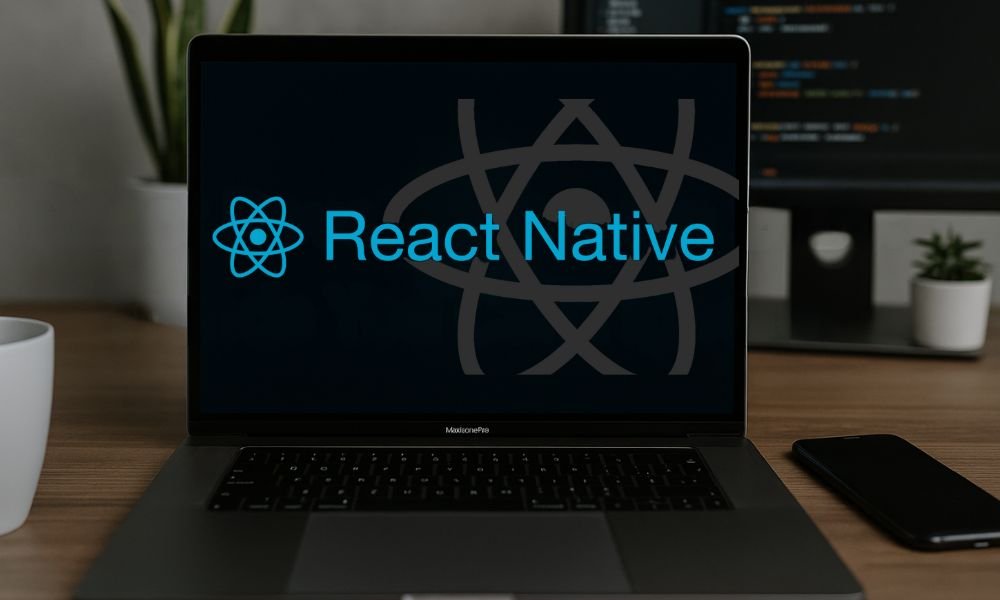
React remains a dominant force in front-end development. In 2025, its development will change according to how programmers design and create contemporary applications. The React ecosystem is evolving rapidly in this transformative era of modern technology. You will observe the evolution in server-side advancements, more intelligent tooling, and universal design principles.
Keeping up with the latest trends is crucial, whether you're developing native experiences, web apps, or full-stack platforms. The most significant React updates this year that you cannot afford to overlook are described in this guide.
1. React Server Components (RSC) Go Mainstream
React Server Components (RSC) is redefining the development of user interfaces.
It enables developers to render portions of the user interface (UI) on the server, rather than sending additional JavaScript to the browser, unlike typical client-side rendering.
Principal Advantages:
- JavaScript packages are much smaller.
- Better SEO and first-load speed.
- Detailed rendering control (per component).
- First-class RSC support is already available in frameworks like Next.js 14, which facilitates the adoption of this architecture.
2. The Default Language is TypeScript
TypeScript is widely used in 2025 and is also the standard for the majority of React teams. TypeScript expertise is being required in great numbers by open-source libraries and employment postings.
The Reasons Developers Choose It:
- In the early detection of errors, typing aids are provided.
- It provides improved documentation and autocomplete.
- Performs well when working with large codebases.
3. The React compiler alters the Game.
Build-time optimizations are elevated to a new level with Meta's forthcoming React Compiler. By examining the code, it automatically memorizes components, negating the need for hooks like React. memo, useMemo, or useCallback.
Impact:
- Fewer bugs as a result of forgotten memorization.
- Performance was improved with no additional code.
- Component logic is clearer.
4. Component Libraries Develop:
Some examples of UI-agnostic libraries are Radix UI, Ark UI, and Headless UI. These are evolving from UI to headless. These frameworks built the visual layer completely customizable, concentrating on offering behavior and accessibility logic.
The importance of this:
- Promotes flexible theming and brand consistency.
- Makes accessibility compliance easier.
- Facilitates the development of design systems more quickly.
5. Development Assisted by AI Becomes Essential
Developer workflows increasingly heavily incorporate AI tools like Chat GPT IDE plugins, Codium, and GitHub Copilot.
Examples from the Real World:
- Generate tests and boilerplate automatically.
- Compile code diffs and pull requests.
- Make code recommendations based on project trends.
6. Layouts that are nested and the App Directory (Next.js)
Next.js’s App The router has advanced with the ages and the modern era.
It showcases:
- Collocated server/client components for file-based routing.
- Integrated error and loading bounds.
- Smooth edge rendering and RSC support.
Impact on Developers:
- Better look & observation into the separation of issues and faster iteration.
- Scalable architecture is enforced by built-in conventions.
- Promotes the co-location of styles, logic, and user interface.
7. Development Based on Performance with Integrated Analytics
From development to production, developers may keep an eye on performance with the use of contemporary tools.
Several important platforms:
- React Development Tools (aware of RSC by 2025).
- For real-time web vitals, use Cloudflare Observatory and Vercel Analytics
- Highlight LogRocket and Sentry for user-level replays and monitoring.
8. Advancement in CDD (Component-Driven Development)
Developers create and test UI elements separately with Backlight, Histoire, and Storybook. This is called Component-Driven Development (or CDD). It also enhances quality and teamwork.
Most important advantages to be noted:
- Designers and developers work in parallel.
- Visual regression testing is now easier and simpler.
- Automated snapshots and documentation.
9. Universal Design: accessibility and theme are provided by default
With the help of tools like React Aria, Reach UI, and React Spectrum, accessibility is now required by law and ethics, not just a nice-to-have. Apps are made more inclusive.
Key attributes:
- Keyboard navigation.
- Less preference for motion.
- Adaptation of color scheme (dark/light mode).
10. Scalable Edge Rendering and Customisation
Vercel, Netlify Edge Functions, and Cloudflare Workers are being used more and more to deploy React apps to edge networks.
Benefits:
- Instant delivery of personalized material.
- Reduced latency for global users.
- Better caching and security models.
11. For High-Performance User Interfaces, React + Web Assembly is opted
WebAssembly (Wasm) is initiated to power React components that are in requirement of high speed, particularly in:
- Video editors.
- Tools for image alteration.
- Dashboards for data visualization.
12. A New Era in State Management Begins
Now we see that lighter, more contemporary state tools have replaced traditional libraries like Redux:
- Zustand: A straightforward and expandable local state.
- Atomic state management: Jotai and Recoil
- TanStack Query: Easily manages caching and server state.
13. Web Alignment of React Native Strengthens
Because of Expo, React Native Web, and Tamagui, React Native and React for Web are converging every day.
New Potentials:
- Now you can find that there are shared components across platforms.
- Through Reanimated 3.0, animations and transitions are made easier.
- Seamless monorepo support with tools like Turborepo.
14. Testing and QA Are More Automated
Modern testing in React uses a combination of:
- Playwright for end-to-end.
- Vitest for fast unit tests.
- Cypress with visual diff plugins.
15. Security Best Practices in React
Security is becoming part of the front-end stack. Libraries like DOMPurify, along with CSPs (Content Security Policies), are common in React deployments.
React 18+ has enhanced support for security via:
- Better SSR sanitization.
- Secure-by-default hydration for server components.
Conclusion: Don't Just Code—Embrace the Shift—Architect
By the year 2025, React development will have evolved in various aspects. It helps in creating components to include creating scalable, accessible, and performant systems with an ecosystem of best practices and developing tools.
To maintain competitiveness:
- With React Server Components, the implementation of contemporary routing will be done.
- Adaptive to performance tools, AI support, and TypeScript.
- When developing with React Server, one needs to consider security, testing, and accessibility.
- Consider systems rather than simply screens.
React’s versatility makes it so durable. The future of the web will be shaped by developers who comprehend its larger ecosystem.

